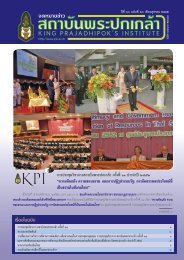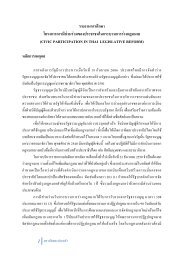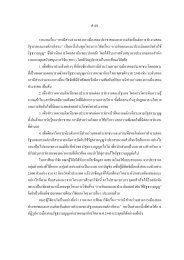SUFFiciENcy EcONOMy ANd GRASSROOtS DEvElOPMENt
SUFFiciENcy EcONOMy ANd GRASSROOtS DEvElOPMENt
SUFFiciENcy EcONOMy ANd GRASSROOtS DEvElOPMENt
Create successful ePaper yourself
Turn your PDF publications into a flip-book with our unique Google optimized e-Paper software.
The Meaning of Sufficiency Economy <br />
International Conference<br />
271<br />
where as energy savings in terms of electricity will be 38.35 MWh/yr. and diesel<br />
saving will be 1.87kl/yr. Total saving per annum will be Rs.0.8948 million. This<br />
saving will be realized when all the renewable energy systems and devices will be<br />
installed in the villages. <br />
Apart from this protection of environment, ensuring of villages energy<br />
security, employment generation and above all social costs of improving quality of<br />
life of the villagers are the added advantages of the recommended devices and<br />
technologies. <br />
Therefore, an emerging scientific consensus that a shift to small scale<br />
sustainable agriculture and localized food systems will address most, if not all the<br />
underlying causes of deteriorating agricultural productivity as well as the<br />
conservation of natural soil and water resources while saving the climate. To<br />
substantially improve living standards, access to modern energy is also crucial.<br />
Small agro-ecological farms are known to be highly productive (ISIS 2011), and are<br />
ideally served by new renewable energies that can be generated and used on site, and<br />
in off-grid situations most often encountered in developing countries. A model that<br />
explicitly integrates sustainable farming and renewable energies in a circular<br />
economy patterned after nature could compensate, in the best case scenario, for the<br />
carbon emissions and energy consumption of the entire nation while revitalising and<br />
stimulating local economies and employment opportunities. <br />
<br />
4. Limitations <br />
Electricity price is the biggest driver of breakeven cost, followed by finance<br />
factors, policy issues, and technical performance. (Denholm et al 2009)<br />
<br />
Caveats of our analysis include: <br />
• Focus of analysis is on overall trends and sensitivities, in order to evaluate<br />
the economic performance of an individual hybrid system a different/more<br />
detailed analysis would need to be carried out.<br />
• Breakeven period or Payback Period does not equal market potential or<br />
guarantee market adoption for rooftop PV, in other words, we do not<br />
present a depth of market analysis.<br />
Unlike fossil fuel technologies, the efficiency of renewable technologies is<br />
generally very site-specific. For example, it would be expected that photovoltaics in<br />
the UK would incur a higher cost per kWh than countries located at lower latitudes.<br />
(Owen 2004)














